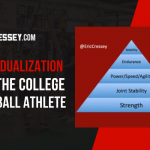The Supreme Court’s recent decision to overturn the Chevron doctrine has significant implications for the future of climate and environmental regulation in the United States. This ruling, which throws into question the deference given to federal agencies in interpreting laws, could lead to increased legal challenges against regulations by agencies like the EPA and the Department of the Interior. The impact of this decision will likely unfold over several years as its effects become clearer.
The Chevron doctrine, established in 1984, granted federal agencies broad authority to interpret unclear policies, with the final say on ambiguous matters. Overruling this doctrine has been described as a “convulsive shock to the legal system” by the Biden administration, raising concerns about the balance of power between agencies and the judiciary.
Environmental organizations have strongly criticized the Supreme Court’s decision, highlighting the potential consequences for agency expertise and the ability to enforce vital protections for the environment. The ruling has sparked a debate about the separation of powers and the role of courts in reviewing agency actions.
Chief Justice John Roberts, writing for the majority, argued that courts should exercise independent judgment when evaluating agency actions, emphasizing the need to uphold the separation of powers. The court’s shift away from Chevron in recent years signals a changing approach to regulatory interpretation.
While lower courts still rely on Chevron deference in many cases, the Supreme Court’s decision could lead to a reevaluation of past regulations and an increase in legal challenges. The implications of this ruling extend beyond environmental issues to encompass a wide range of regulatory matters.
The dissenting opinion, expressed by Justice Elena Kagan, raises concerns about the potential consequences of discarding Chevron, warning of the impact on public health, safety, and environmental protections. The decision could shift the balance of power in favor of the executive branch, prompting questions about the future of regulatory oversight.
The case at the center of this debate, Loper Bright, underscores the complexities of regulatory interpretation and the challenges of balancing competing interests. As the legal landscape evolves, the role of agencies, courts, and Congress in shaping policy and enforcing regulations remains a subject of ongoing debate.
The Supreme Court’s decision to overturn the Chevron doctrine reflects broader ideological shifts and debates about the role of government in regulating industry and protecting the environment. As the legal landscape continues to evolve, the implications of this ruling will shape the future of environmental policy and regulatory enforcement in the United States.






